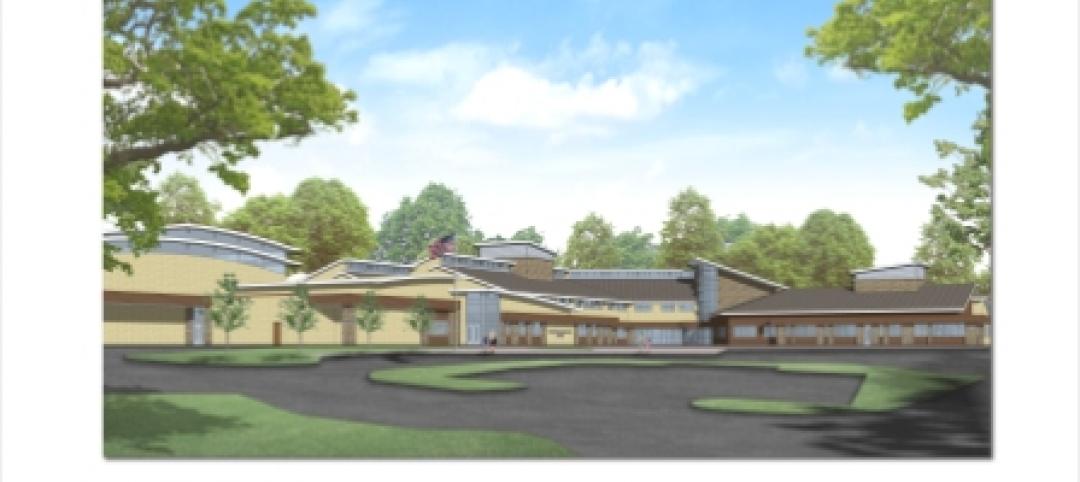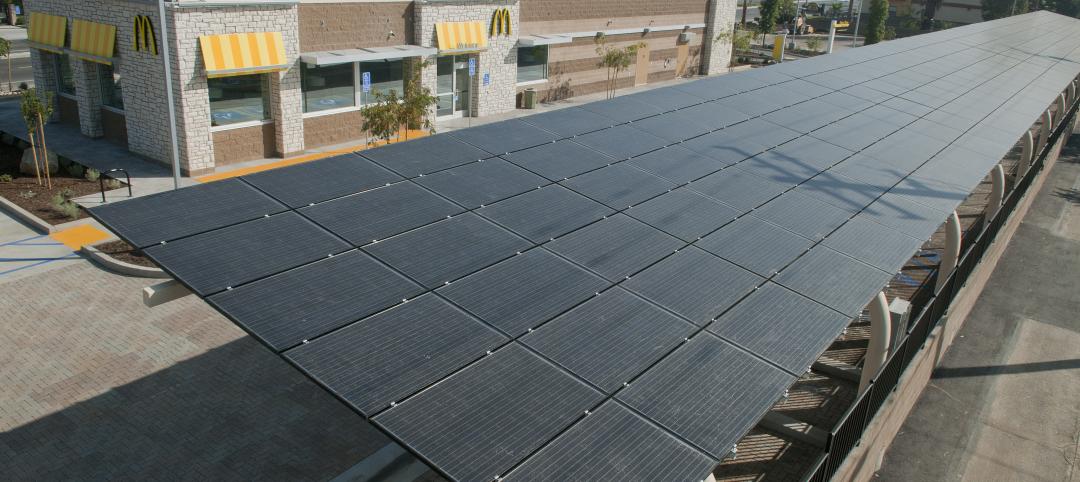Since April, Arup, the global built environment consultant, has been gathering data on an undisclosed number of buildings it has worked as a prelude to its commitment, which commenced this month, to conduct whole lifecycle carbon assessments for all of its construction and renovation projects going forward.
Those assessments will attempt to estimate a building’s carbon emissions from pre- and post construction, and encompass such variables as manufacturing, transportation, materials selection, operations, and maintenance. Arup estimates that as much as half of a building’s lifecycle CO2 emissions is attributable to embodied carbon before the building is operational.
Arup’s goal through its commitment is to confidently advise its developer-owner clients, within budgetary and quality parameters, on what products for each of a building’s systems and subsystems will produce the least amount of carbon emissions during a building’s duration. “We’re attempting to build our insights so that CO2 becomes a performance metric,” explains Erin McConahey, PE, FASHRAE, Principal and Arup Fellow. What’s been lacking—and what Arup is trying to address with its assessments—has been a critical mass of data.
ASSESSMENTS REQUIRED MORE DATA
When it announced its commitment last November, Arup stated that fewer than 1 percent of building projects was evaluated to quantify carbon emissions over their lifecycles.
Adopting whole lifecycle carbon assessments is essential to Arup’s and the building sector’s shared ambition to reduce projects’ carbon emissions 50 percent by 2030. The insights gained from conducting thousands of whole lifecycle carbon assessments each year “will help the built environment sector advance toward net zero,” stated the firm, which is developing similar methodology to extend its assessments to its infrastructure work.
Using a digital platform it devised, hundreds of project teams at Arup have been collecting carbon data on several of its 1,300 projects that met certain dollar thresholds of activity within the last fiscal year, and on whose design Arup was directly involved, says McConahey. That platform leverages materials information from measuring tools such as the Embodied Carbon in Construction Calculator (EC3), whose database allows users to compare materials for their embodied carbon impact; and Environmental Product Declarations (EPDs), through which manufacturers present objective, third-party verified data to report on the impact of their products and services.
McConahey says that, at present, manufacturers “are the only source of truth” when it comes to lifecycle carbon assessments of their own products. She adds that more contractors are asking for EPDs as part of their bidding and estimating.
DESIGNING FOR CARBON REDUCTION
The data that Arup has been assembling will allow the firm to review and adjust its design practices “using carbon rules of thumb,” says McConahey. Early next year, Arup intends to share some of its top-line insights with the industry, with an aspiration of providing a blueprint for the built environment’s path toward net zero.
Arup’s commitment is part of an ever-growing focus on environmental, social, and governance topics and reporting for construction and engineering firms. “Health, safety and labor; contracts and competitive bidding; and carbon emissions from buildings and construction form the backbone of their ESG agendas,” wrote the accounting and management consultant EY in a paper it posted last November about the state of ESG in the engineering and construction industry.
That paper found that among the 24 engineering and construction companies reviewed, leaders were making disclosures against at least 20 of 24 metrics covering ESG issues. This level of transparency is being driven by investors that evaluate ESG performance on corporate disclosures; and by Millennial workers who are three times more likely to seek employment with a company because of its stances on environmental and/or social issues.
Related Stories
| Jan 31, 2012
Fusion Facilities: 8 reasons to consolidate multiple functions under one roof
‘Fusing’ multiple functions into a single building can make it greater than the sum of its parts. The first in a series on the design and construction of university facilities.
| Jan 31, 2012
KBE selected for school project in Waterbury, Conn.
Located adjacent to the existing elementary school, the $28 million, 82,000 s/f Pre-K to eighth Grade school is expected to host its first students in the fall of 2013.
| Jan 30, 2012
Siemens and Air-Ex Team deliver building controls training to Mt. San Antonio College students
Siemens contributes training modules and technology to support hands-on courses.
| Jan 27, 2012
BRB Architects designs new campus center for Molloy College
Intended to be the centerpiece of the College’s transformation from a commuter college to a 24-hour learning community, the “Public Square” will support student life with spaces such as a café, lounges, study rooms, student club space, a bookstore and an art gallery.
| Jan 27, 2012
Columbia University’s New Core Laboratory aims for LEED Silver
Construction manager Sordoni Construction Co. along with the design team of Payette Architects and Vanderweil Engineers will provide design and construction services to renovate the majority of the existing Core Lab building to create the new Lamont Center for Bio-Geochemistry.
| Jan 26, 2012
Siemens launches smoke detection knowledge center
New knowledge center web site demonstrates efficacy of smoke detection.
| Jan 26, 2012
American Standard names Gould as president and CEO
Gould succeeds Don Devine, who led the successful turnaround of American Standard Brands.
| Jan 24, 2012
U of M installs new lighting at Crisler Player Development Center
Energy efficient lighting installed at PDC reduce costs and improves player performance.
| Jan 24, 2012
Rockingham County Judicial Center receives USGBC Gold NC v.2.2
The Rockingham facility is the first judicial center in North Carolina to seek certification from the U.S. Green Building Council’s LEED Building rating system.
| Jan 19, 2012
LEED puts the 'Gold' in Riverside golden arches
McDonald's restaurant recognized for significant energy savings.

















